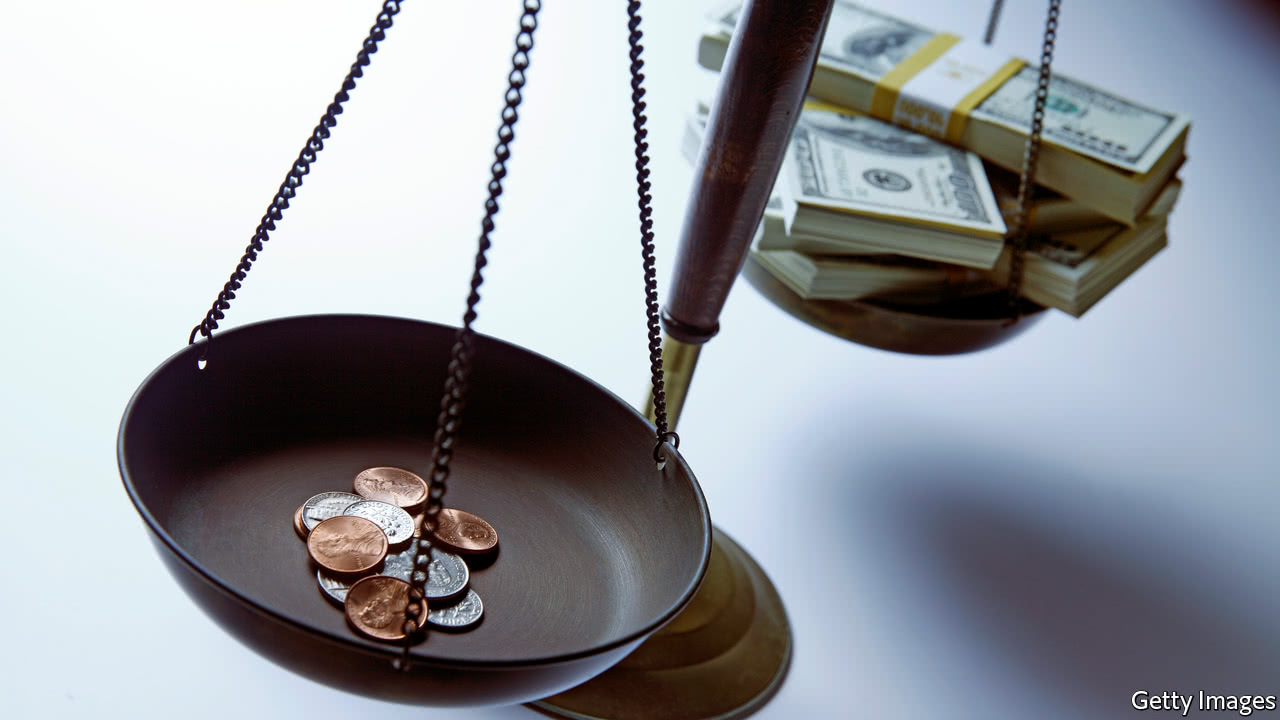Ignorance about the scale of the problem is part of the answer

MOST Americans are unenthusiastic about Republicans’ efforts to reward the richest with the biggest tax cuts. In polls taken on the eve of a vote on the government's tax bill in the Senate on December 2nd only between a quarter and a third of voters supported the plan. But in general Americans seem more willing than the inhabitants of other rich countries to tolerate inequality.
Data from the Organisation for Economic Co-operation and Development (OECD) suggests that America is a relatively unequal country and that the government does comparatively little to redress the balance. The most common measure of inequality, the gini coefficient, takes a value between zero (if everyone earned exactly the same) and one (if all income were earned by one person). America’s gini before taxes and transfers was 0.47 compared with the OECD average of 0.43. After taxes and transfers, America’s gini falls to 0.39. The OECD average is 0.31. In 2014, taxes and transfers reduced American inequality by a mere 18%; this compares with 25% in Britain, 29% in Germany and 34% in France.
Americans appear to be less averse to inequality than citizens of other rich countries. Lars Osberg and Insa Bechert of Dalhousie University found that the most inequality-averse 10% of Americans resemble the inequality-averse in other countries, favouring an earnings ratio between CEOs and unskilled labourers of about two to one. From there the gap widens: the most inequality-tolerant Americans see the ideal ratio as 50 to one; compared with 24 to one amongst the most inequality-tolerant in Britain. In Sweden the figure is five to one.
Why the difference? One reason may be that Americans don’t realise how unequal incomes are. In common with the inhabitants of other wealthy countries, most Americans believe there is too much inequality. But they underestimate just how much of it there is. The average American puts the current ratio of CEO to unskilled worker pay at thirty-to-one; their preference is for about seven-to-one. But the actual CEO-unskilled wage ratio in America is 354 to one.
Ignorance about the scale of inequality is a global phenomenon. In a new paper in Economics and Politics Vladimir Gimpelson and Daniel Triesman write that across countries there is only a tenuous relationship between (post-transfer) inequality and perceived inequality. And research suggests that those who have a more realistic understanding of inequality worry more about it. Michael Norton and Sorapop Kiatpongsan of Harvard and Chulalongkorn Universities found that those who strongly agree with the idea that differences in incomes are too large estimate the CEO-worker wage gap at 12.5 to one. Those who strongly disagree estimate the gap at 6.7-to-one. There is broad agreement about the “ideal” income gap between these groups (which ranges between four to one and five to one); the difference is over what they believe the ratio actually is.
A second reason Americans may differ in their view of inequality is that they seem not to trust the government to fix the problem—or to believe that this is part of its job. The researchers from Dalhousie University suggest that American respondents tend to be more sceptical about the role played by government in reducing inequality. And when Jan Zilinsky at the University of Chicago randomly exposed a sample of Americans to information about inequality in America, it made them depressed about the issue but no more likely to support cash transfers to the poor. Most Americans may dislike a tax bill that increases inequality. But that does not mean they would support one that did the opposite.
No comments:
Post a Comment
Note: Only a member of this blog may post a comment.